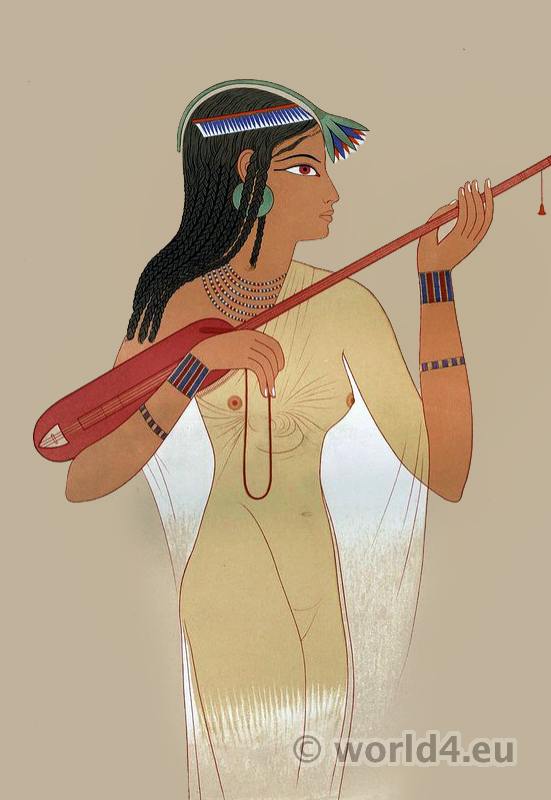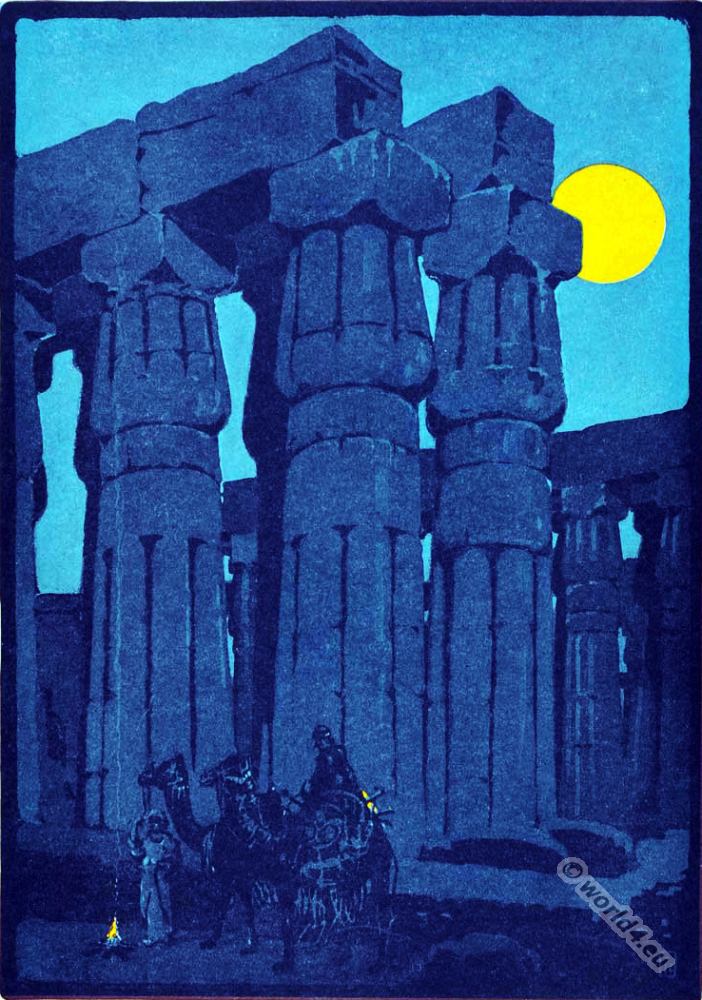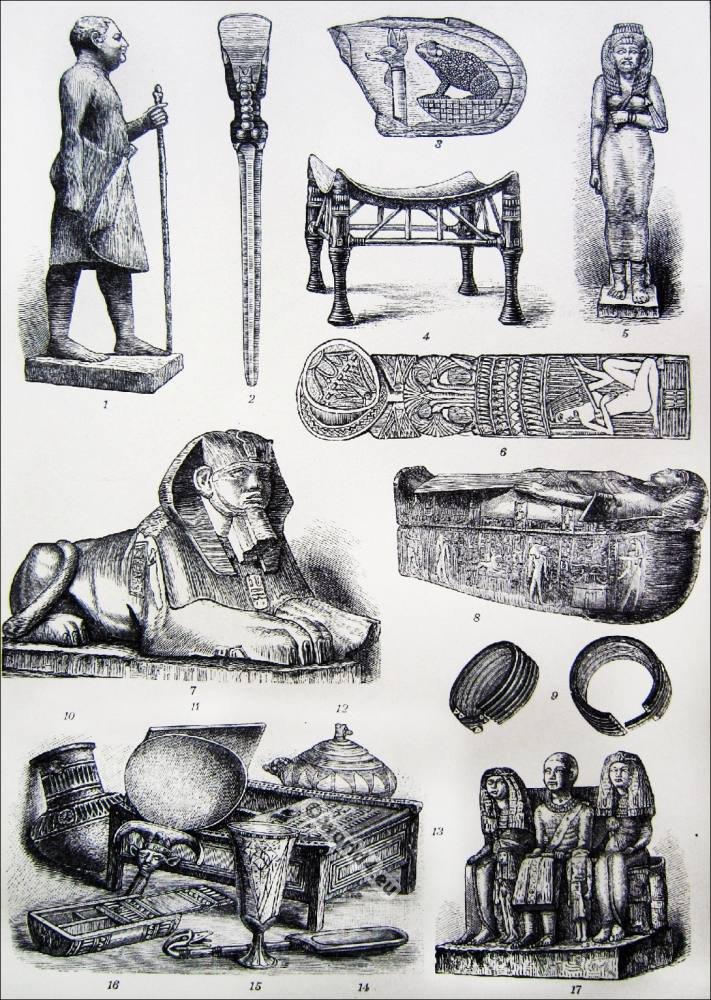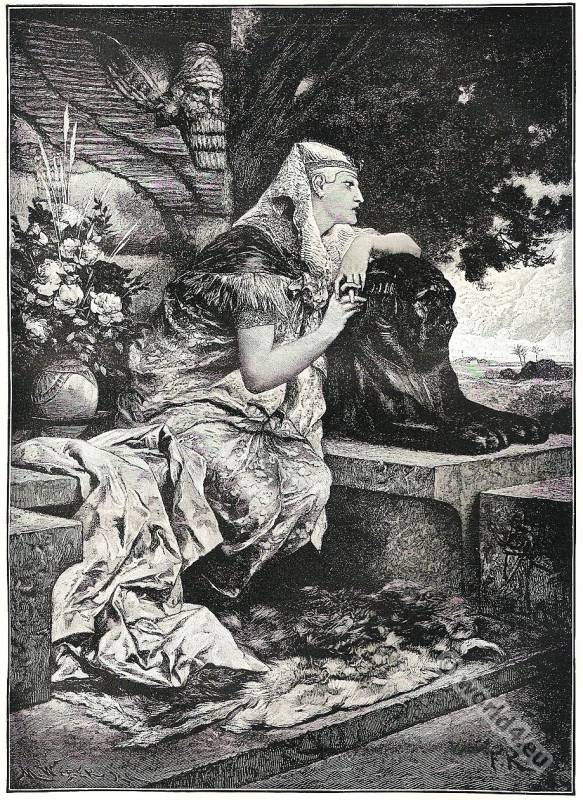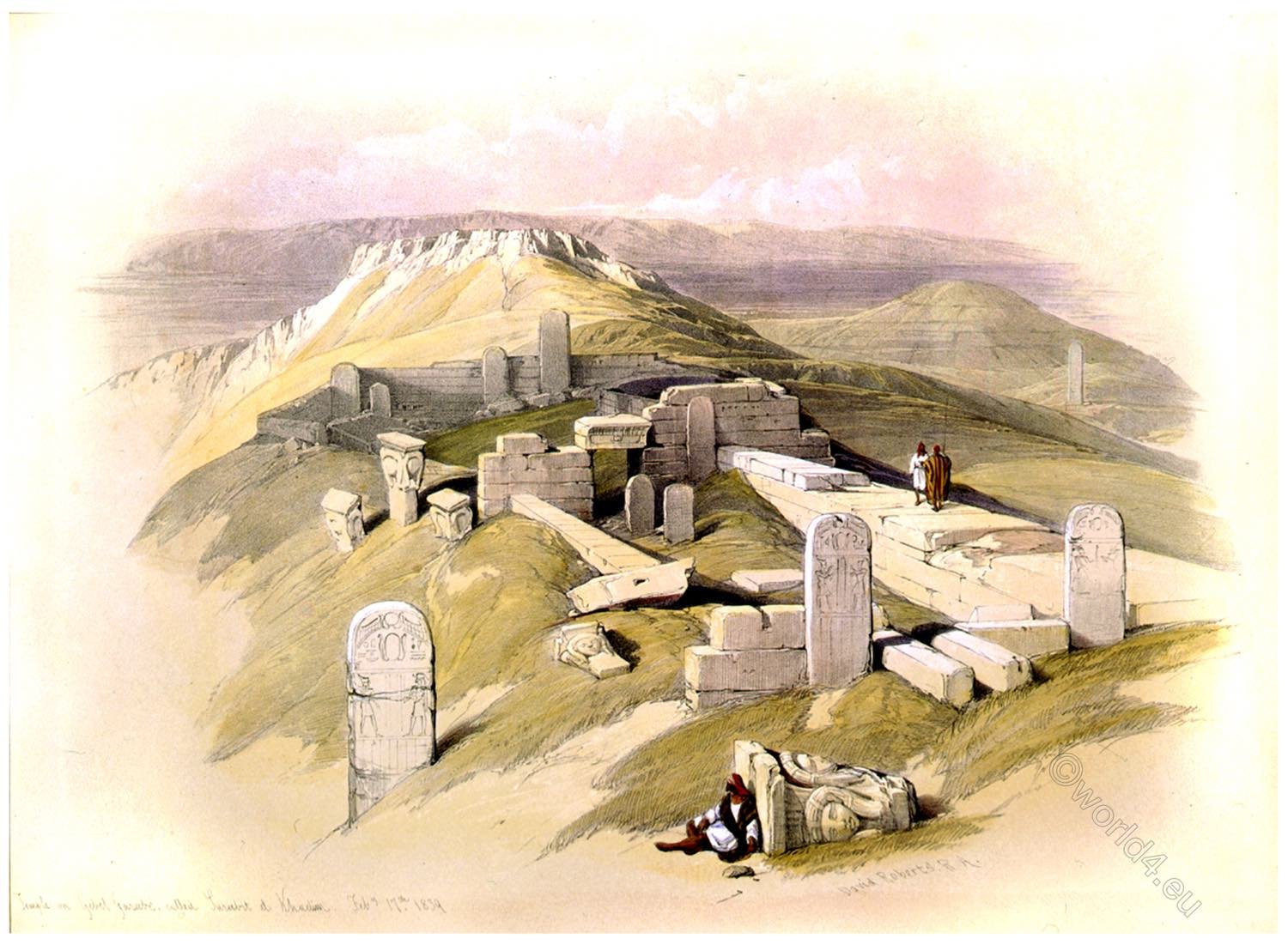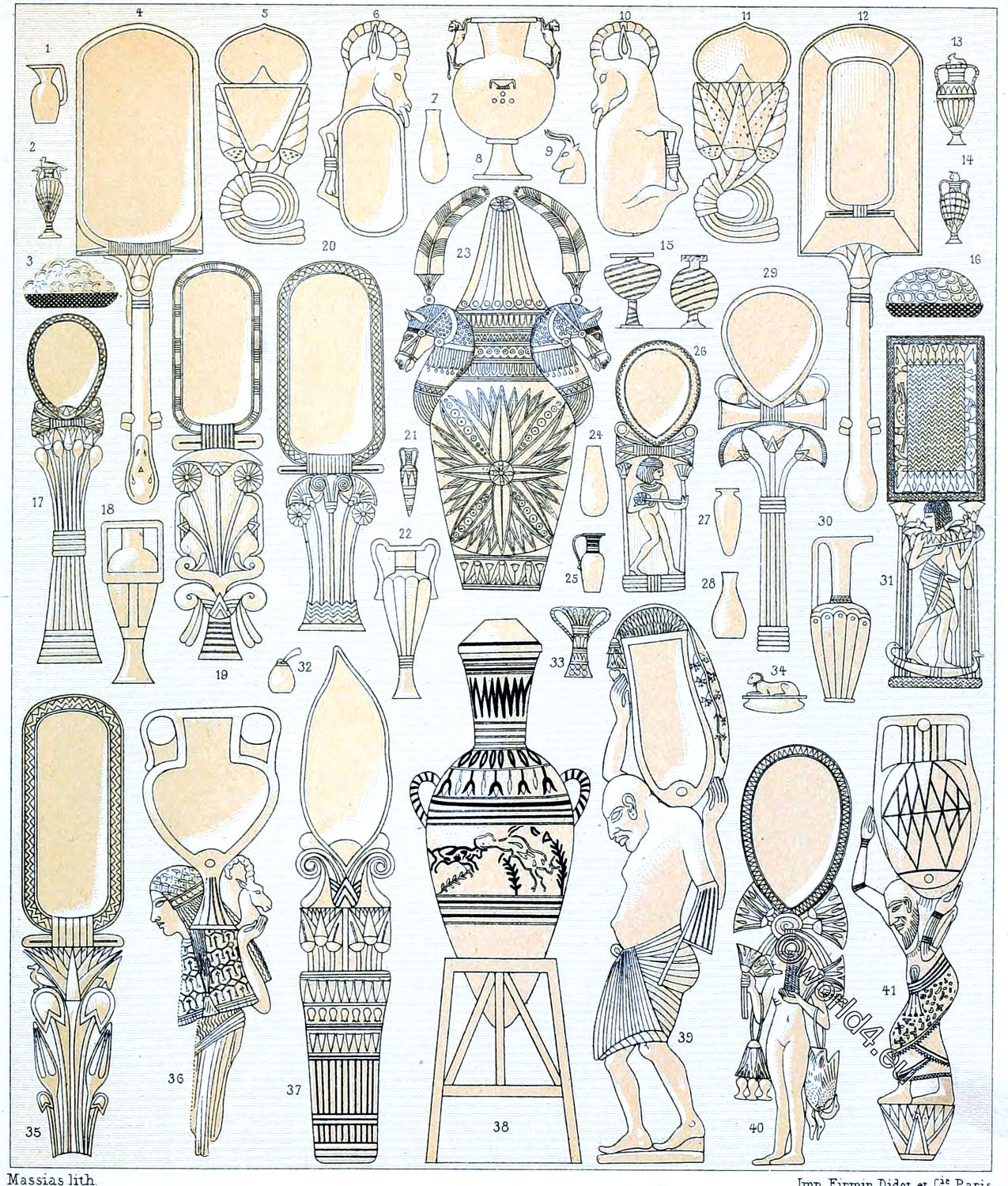
EGYPT. DOMESTIC APPLIANCES.
Home appliances. Household utensils. The amphora, vases, vessels. Boxes of ointments and perfumes. The styles of the shovels.
Nos. 1, 7, 24, 27 and 28. Vessels from a wall painting showing the interior of a cellar. There are numerous examples of earthenware vases in the Louvre in equally varied shapes. They are 12-20 cm high.
Nos. 7, 25, 27 and 28. Vessels from the genus of ampoules, as small vases were called, whose stomach resembled a pig’s bladder. These were preferably ointment vessels in which fragrant oils and ointments were stored.
No. 3 and 16. Flat baskets of food carried by tributaries on murals.
No. 15. Vases of enamelled glass. Similar ones in the Louvre are 20 cm high.
Nos. 2, 9, 13, 14, 21 and 33. Vases of various shapes, like the previous ones dating back to the 17th century BC. There are also ointment pots and smelling bottles. They were made of alabaster, precious stones or glass. The originals in the Museum of Naples are made of the latter material. The types of alabaster used for this purpose, which were fine-grained and capable of a beautiful polish, were of different types.
The Egyptians obtained limestone and gypsum alabaster from the area around Thebes and the city of Alabastron. The veined alabaster had more or less dark stripes. The onyx alabaster, the agate marble and the flowered alabaster came from the mountains of Arabia.
Number 34. Small vase or perfume box with lid, depicted in a donation made by an Asian prince to King Thutmosis IV. (he reigned approximately from 1397 to 1388 B.C.).
No. 23 and 38. Closed amphorae of enamelled clay. In antiquity, vases formed the most beautiful and richest part of household utensils. Nos. 23 and 38 show the care the Egyptians took in decorating such vessels.
No. 38, which stands on a tripod, is the Bardach, a vessel made of porous clay that served to clarify the Nile water and keep it cool. These vessels are buried with their lower tip in the sand of the cellar or placed in a tripod with a ring.
The amphora, a Greek term indicating that the vessel could be carried on either side, was often of such a size that two people were needed to transport it. For this purpose, a strap was pulled through the two handles (diota) and through the strap a supporting beam was inserted, which was placed on the shoulders of the bearers. Originally, the amphorae were made of clay.
Then such were made from ore, marble and other materials. Wine, oil and honey were kept in them. When they were brought into the dining rooms, they were placed on a tripod. The Egyptians later also provided the amphorae with a foot, as can be seen on the closed and unlocked vessels No. 2, 13, 14, 18 and 22.
This latter form was adopted by the Athenians for their amphorae with holy oil, which were distributed at the Panathenia as prizes for the winners (The Panathenia was the largest religious-political festival in ancient Athens, celebrated in honour of Athena, the patron goddess of Athens).
At the neck of No. 23 the front parts of two horses are attached, bridled up and decorated with high feathers, as can be seen on the two-horse war chariots of the Egyptians. Presumably the feathers were movable so that the high lid of the vessel could be removed, if the latter is not a mere fantasy. Nos. 38 and 23 are reproductions of wall paintings from the tombs of Kurna in Thebes, dating from the XVIth century BC.
Because of its wide opening, No. 8 seems to be a vessel from which the contents were scooped out with a ladle. The handles are formed by tigers.
No. 32. Bag of gold dust used as currency. The other objects on this plate are reproductions of originals from the Louvre. Some are pans with long handles on which incense and other fragrant herbs were burned or used to take ointments out of boxes, others are boxes of ointments and perfumes. The former are all made of wood, 12-25 cm long and were mainly found in the graves of Kurna.
Nos. 4 and 12, 6 and 10 represent the front and back of one and the same shovel. The anointing of the body with fragrant oils and pomades, especially after frequent ablutions, was a common custom among the Egyptians, and it was common to both sexes. The styles of the shovels were formed from lotus branches and leaves and sometimes decorated with human figures, as shown in no. 26, where a lute player is depicted on the handle, and no. 31, where a slave standing on a boat carries an unrecognizable object. In no. 40, the entire handle is formed by a female figure bringing poultry, lotus flowers and fruit.
No. 5 and 11 (front and back) is a perfume box with a lid, which was attached to a string with the lower ring and thus worn. No. 36, 39 and 41 are worn by figures. No. 41 is closed by a button, which can be noticed at the top. The figures represent the representatives of conquered Asian peoples, to whom the Egyptians used to impose the supply of fragrant substances as a tribute. These tins are also made of wood, usually sandalwood, which has a reddish, yellow or white colour and is itself already fragrant. If ebony was used, it was painted or gilded.
Source: History of the costume in chronological development by Auguste Racinet. Edited by Adolf Rosenberg. Publisher: Firmin-Didot et cie. Paris, 1888.
Related
Discover more from World4 Costume Culture History
Subscribe to get the latest posts sent to your email.

